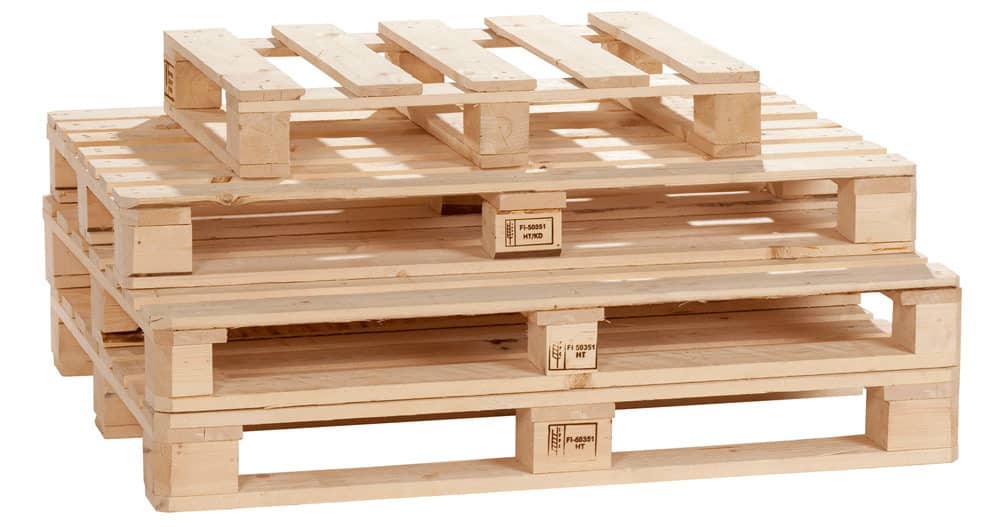A pallet is a flat transport structure that supports goods in a stable fashion while being lifted by a forklift, pallet jack, or crane. Pallets enable efficient handling and transportation of materials throughout manufacturing and warehousing facilities as well as supply chains.
What is a Pallet?
A pallet is a platform structure used for storing and transporting materials and products through the supply chain. Traditionally made of wood, pallets can now also be composed of plastic, metal, paper and other composite materials. The pallet functions as a base for goods which allows the use of mechanical equipment like forklifts to lift, move and place the pallet for transport, storage or shipping.
Pallets support stacked units of goods in a stable manner and allow multiple items to be transported simultaneously, improving efficiency. Since they are designed to work with material handling equipment, pallets make it easier to load, move and unload cargo. Pallets ensure safe handling and prevent damage or spillage during transportation and storage.
Importance of Pallets in Supply Chain Management
Pallets play an important role in supply chain operations and logistics for multiple reasons:
Increases Efficiency
The use of Pallet allows goods to be transported in bulk which reduces the handling costs significantly. Pallets allow easy loading and unloading of products without much effort. This streamlines material handling processes within production facilities and warehouses.
Safety of Products
Goods placed securely on pallets don’t shift during transit which prevents damage. Pallets absorb impacts and distribute weights evenly. This ensures products reach customers safely without breakage or loss.
Standard Sizes Allow Interchangeability
Pallets are manufactured in standard sizes that suit most supply chain needs. Their dimensional uniformity allows pallets to be used across different facilities and transport modes. This interchangeability maximizes usage and returns on investment.
High Loading Capacities
Pallets enable vertical stacking of units to a desired height within safe weight limits. This increases the loading density and space utilization of trucks and shipping containers, improving transport efficiency.
Types of Pallets
There are different pallet types used for various applications based on material used, structural design and intended payload:
Wooden Pallets
Wooden pallets are the most common type owing to their durability, strength and eco-friendly nature. Varieties include stringers, block and other designs from different wood types like pine, oak etc.
Plastic Pallets
Made of recycled plastics, plastic pallets are moisture and corrosion resistant. They are lightweight for improved payload to weight ratios and easier to clean than wood. However, plastic pallets have lower load capacities.
Corrugated Pallets
These are single-use disposable pallets made of corrugated paper or paperboard. Used mainly for produce transportation within the food supply chain for their low cost.
Metal Pallets
Heavy duty metal pallets are sturdy and last long but expensive. Often used where wood can’t be used or for very heavy loads in manufacturing.
Hybrid/Composite Pallets
Combining materials like plastic and wood or paper and plastic, hybrid pallets offer benefits of both materials used.
Pallet Management and Logistics
Proper pallet management and logistics planning is required to optimize pallet usage in transportation and warehousing. Key aspects include:
Pallet Pools
Pallet pools enable the efficient reuse and redistribution of pallets between supply chain partners. This minimizes new pallet costs.
Barcode Tracking
Barcoding pallets allows their unique identification and tracking through the supply chain using warehouse management systems.
Pallet Repair and Maintenance
Damaged pallets need timely repair to maximize their life and ensure safety of handling. Strategies like pallet repairs and reconditioning reduce costs.
Reverse Logistics
Setting up reverse logistics is important for collecting used pallets scattered across various customer locations back to own facilities for reuse or recycling.
Standardization
Standard pallet sizes should be adopted within supply chains for interchangeability across partners and transport modes. This enhances supply chain integration.
With growing international trade, the pallet industry continues to evolve with new materials, construction innovations and technologies for improved logistics efficiency. Proper pallet management and utilization of resources help companies optimize supply chain performance and reduce operational expenditures significantly.
*Note:
1. Source: Coherent Market Insights, Public sources, Desk research
2. We have leveraged AI tools to mine information and compile it

